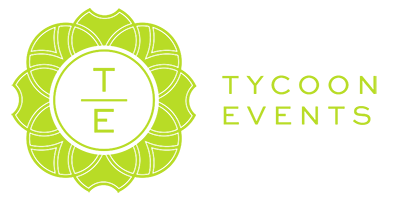“Where there is data smoke, there is business fire.”
— Thomas Redman
Data, data, data. It seems to be the hot topic that every business and event is talking about. We all want to know how we can use data to measure success. This concept can seem a bit foreign and overwhelming, however, we have compiled the best tips and tricks to make the most of your event metrics.
As event planners, we have always tracked and measured attendance numbers, but what else is available for us to measure from our events?
Goals and Objectives
The first step of determining the best event metrics is to consider your overall goals and objectives. Are you looking to make a profit, gain more customers, show appreciation to the attendees, or help grow a brand or product?
This will form the base for your key performance indicators (KPI). You will also need to consider the type of event as virtual events will have access to different metrics such as click rates and streaming times that you would not see at live events.
Key Performance Indicators (KPIs)
KPIs are a quantifiable measure of performance over a certain period of time for a specific goal or objective. They will be the top things you want to measure to see if your event is successful. Not sure where to start?
Here are some of our favorite event KPIs:
- Event Check-Ins
Look at the total number of people who actually checked in to your event. How does this compare to the number of people registered? Digging into this information could offer insight into ways you could improve attendance. Perhaps a better safety plan to make attendees feel safer attending or another reminder email so that attendees don’t forget about your event is necessary.
- Net Promoter Score (NPS)
This is a fancy way of saying would your attendees recommend your event to their friends. This can be measured by asking on a scale of 1 (unlikely) to 10 (very likely) in a post-event survey. Attendees that answer between a 9-10 are your promoters while those that answer 0-6 are your detractors.
% promoters – % detractors will give you your NPS
Your NPS will then tell you how much value your event brought to your attendees. You can then strategize how you can improve to make those detractors into promoters at your next event.
- Speaker Engagement
Speaker engagement is a KPI that can be measured in a number of ways and it is up to you to choose the one that best fits your event.
Some examples include:
- # of session views
- # of interactions with a live poll
- # of interactions during a Q & A period
- Average viewing time (did people leave early?)
These numbers can be compared against other speakers at the event or against the event as a whole to help you determine where the attendee value is coming from.
- Social Media Engagement
Social media engagement can include engagement on your own posts and mentions from attendees on their own channels. Here are some ideas on what to track and how to measure it:
- # of likes, comments, and shares on your event posts and content
- # of times handle or hashtag is mentioned by attendees
- % of mentions that are positive versus critical
It is important not only to measure how many times you are being mentioned but also what they are saying about the event. If your attendees took the time to post about a specific aspect of the event, this is likely the part that was the most impactful.
What’s Next?
You have identified your objectives, chosen your KPIs, and measured them throughout your event. Now what?
One of the most important steps is to investigate the information and turn it into useful knowledge that can guide your decision-making for your next event. For example, was your social media engagement low? Maybe you need to promote your social media handles more throughout the event.
Another option is to turn this data into visualizations such as charts, dashboards, or infographics. Programs such as Google Charts, Tableau, and Grafana specialize in data visualization and can help you take a boring spreadsheet and turn it into a functional visual of your event in a snapshot.
Finally, consider using the data to forecast for your next event, next month, or even next year. We recommend using a program such as TIBCO, SAP Analytics Cloud, or WebFOCUS. Don’t be deterred by their data focussed names; they are user-friendly and can be used to help you predict the number of attendees, location of attendees, and other information based on your previous events.
Data and event metrics are your friend! They can provide such valuable insight into how to make your events even more successful. We recommend starting slow with a single KPI and expanding your repertoire to include more measurements and metrics over time. Your clients, vendors, sponsors, and attendees will all thank you for the improvements and insights that data can provide!
– Your Tycoon, Kassidy XO

